I do not have time to go early in the spring while the snow in the forest glades, and the very first flowers are starting to break through the very first flowers of the soil of the soil. This gentle and fragile flowers are very often confused with snowdrops, ranging to varieties with blue inflorescences. However, these two primroses relate to completely different species, so it is not worth confused. Szillla flower, as a scientific call is called the proless, begins to delight with his bright blue-blue bells, when all the snow has not yet come down, showing all its strength and resistance to bad weather. It was for these qualities that this culture was so fell in love with gardeners, decorating their gardens. The beauty of the scill, landing and care for which is quite simple and can even be a novice gardener, will become an excellent addition to natural landscape compositions.
In this article, consider the features and description of the szill or proleski, as well as we present the main characteristics of popular species and varieties of this flower. We note the important points and the rules of agrotechnics of growing szill.
Features and morphological description Szill
Szillla is a perennial bulbous plant, which today belongs to the Sparzh family. Although in many literary sources you can meet some different data regarding the species affiliation of this plant. Several years ago, Schill was referred to another family - to Lily and Hyacinth. Friday, this primrose was related due to the huge similarity in their structure and chemical property. Due to the structure of the petals, the prolessia is often confused with a snowdrop or with a liver, so if you wish to grow such a plant, it is necessary to clearly represent how the szillus looks like. It can be found almost all over the world, since only this genus plant has about 90 species. The main natural range of growing this fragile flower is the territory of Asia, Europe and Africa. Only some species can be found in South Africa. You can meet the flower on the plains or in the mountainous terrain, in short and mixed forests, in the steppe regions.
The scientific name "Szill" occurred from the Greek word "Skilla", which marked the sea onions. This plant was previously related to this genus. In the people, most often you can find a more familiar name - prolesk. The origin of such a name is most likely due to the place of growing flower - on the edges of the forest and in the prolesca. Sometimes gardeners are called Scylla "Favorite Weed", as this plant has enviable unpretentiousness to the conditions of cultivation and strong frost resistance. For this reason, Scylla is a desired guest on any garden and the naud.
Szill description:
- Scyll plant is a long-term grassy bulbous culture, which in recent years has become a frequent guest in the gardens and on the flower beds due to its high decorativeness and unpretentiousness in care.
- The root system of this plant is represented by a bulb, which is why until recently, the recreation was attributed to the hyacinth family.
- Szill bulbs have a rounded or slightly oblong oval form. From above can be covered with outdoor scales of brown, purple or dark gray shade, it all depends on the specific type and variety of prolesta.
- The bulbs are the main way to grow and reproduction of this culture.
- Scyllu leaves are long and straightforward, grow immediately from the roots. On the shape of a leaf plate lanceal or linear, has parallel bodies.
- The foliage of a saturated green shade has one distinctive feature. During the rain or in cool days, all the leaves are pressed against the surface of the Earth, and in warm and sunny days they are located almost vertically.
- Long leaves of the scroll appear a little earlier or simultaneously with the stretching of the floweros.
- Flowerines appear from the middle of the root rosette of the leaves. They rise significantly higher foliage and are completely naked.
- Depending on the specific grade, the height of the szill may be different. Most often there are flowers with a medium height of 15-20 cm, however, there are varieties with a decoration height of up to 100-120 cm.
- On the tops of the bare stems blooms, which can be solitary and consisting of several floweries.
- Most varieties of inflorescence may consist of 3-15 colors, but there are varieties that have a top-like inflorescence of up to 100 small colors.
- Prolesta flowers actinorphons, which means that they have radial symmetry.
- Consist flowers from the perianth, 6 petals and stamens, pestle and wound.
- There is a well-established opinion that the prolester differs only by blue flowers. However, this is not the case, today you can meet Scylla of all shades of blue and blue, as well as purple or pink flowers, as well as snow-white flowers of plants.
- Flowering begins in different ways, it all depends on the variety, so this period can be stretched for several months from March to May. It is also worth noting the autumn scilla, in which bloom begins at the end of summer, but these plants are practically not used in gardening.
- After biting inflorescences in their place, the fruit is formed in the form of a box, which contains a large number of small seeds.
- Scylla is distinguished by stability to frost and growing conditions, perfect and easy can adapt to various soils and sites. Therefore, putting a flower in one place, in a year you can see the same flowers in a completely unpredictable place.
- This plant is used to decorate the indent. Szillry planted on the Alpine slides, along the curbs and garden tracks, on the flower beds and garden lawns.
Variety of popular species and varieties of szillla
To date, there are a large number of types and varieties of szillla, which are distinguished by the habitat, with a shade of inflorescence and height of stems. Almost all varieties of prolesm can perfectly withstand a significant decrease in temperature. Consider the main characteristics of popular species of Szill.
Scylla Sibirskaya
This type of szill is known in gardening from the 18th century. This name is a plant turned erroneously, as it does not grow on the territory of Siberia. The territory of Russia, the Caucasus, Crimea, as well as the Southern and Medium Districts of Europe is considered the natural habitat. This beautiful flower has one feature - for several seasons, several plants actively multiply and occupy large areas. Flowers in the species plant have a blue shade. With the help of breeders, several varieties were derived, in which flowers can be blue, pink, purple or white shade. It is also worth noting another feature of Siberian Siberia: Flowers open at 10 am, and closed at 4-5 pm. At the same time in cloudy weather they can not disclose at all.
Popular varieties and varieties:
- Scylla Caucasian. In nature is found in the Eastern Transcaucasia. In height can reach 20-40 cm. Blossom starts in the middle of spring and lasts for 2 weeks. At high blooms blooming dark blue with a purple colors.
- Szillla Armenian. This kind of szillla can be found in the Transcaucasia or in Turkey. The plant in height reaches only 10-15 cm. Differs with thin sickle leaves and beautiful bright blue colors.
- Scylla "Spring Beauty". This variety of proleski was greatly popular in Western Europe. It is characterized by sufficiently durable and thick blooms of a green-purple shade. At the top of one bloody, there is a complies consisting of 5-6 flowers. One flower in diameter can reach 3 cm. Tint of petals dark purple. It differs in that it does not have the ability to tie seeds.
- Scylla "Alba". This is a variety of prolesk with snow-white inflorescences. It is distinguished by the fact that he blooms for a couple of weeks later than other varieties, but at the same time the flowering is longer - can last about 3-4 weeks.
Szillla Belloltaya
This type of prolesta in nature was widespread in Spain, Portugal and South of France. In these countries, this plant can be found in the meadows and in the forests. Quite often, this flower is compared with hyacinths, it is associated with similar flowering and form of inflorescences. In the height of Szillla, the bell rolling on average reaches 20-30 cm, but you can meet copies up to 70-80 cm. There are varieties with single blooms, with inflorescences of 5-10 colors in one, as well as plants with creep vertical inflorescences with just a huge amount of colors Blue, pink, purple or white shade. One flower in diameter can reach about 2 cm. The flowering starts at about the end of May and lasts for 2 weeks. Most popular varieties:
- Scylla variety "Rose Queen". In height, the plant can reach about 20 cm. On single flowers, beautiful pink flowers with a lilac shade are blooming.
- Scylla "Sky Blue". This variety is characterized by large colors of a blue shade with a bright blue stripe that blooms on single spiral flowers.
- Scylla "La Grandes". Also a very popular variety of the bell prolel, which is distinguished by beautiful snow-white colors collected in inflorescences of 10-15 pieces.
- Scylla variety "Rosabella". This variety is a plant with a height of up to 30 cm. It pleases with lush and bright blossoms, during the period of which lilac-pink flowers collected in tight-shaped inflorescences are blooming on blooms. They are distinguished by a pleasant aroma that enhances in the evening.
- Scill bell mixture. It is a range that contains various shades: pink, blue, white.
Scylla doubles
This type of prolesk is considered to be the most abundant and low, due to which is very popular among the gardeners. The natural area of \u200b\u200bhabitat is the territory of the Mediterranean, the Crimea, the European part of Russia and the West-Cascaly. It is a low plant up to 15 cm in height, on which up to 3 color seals is formed. On each flowers, a cysterified inflorescence consisting of 10-15 flowers of white or pink shade is blooming. Flowers have a pleasant and strong aroma. Each plant has only two linear leafs, hence the name of the entire type of szill. Blossom starts from the second mid-April and lasts for 2 weeks.
Scill Autumna
The natural habitat of this variety of prolesk is considered the territory of the Mediterranean, North Africa, Malaya Asia. Present a low to 15-20 cm. Plant, which simultaneously releases up to 5 color seals. On the tops of the flower bridges are blooming for 6-20 colors in one. Flowers painted in a reddish purple or pale lilac shade. The blossom at the species begins approximately at the end of July or in early August and lasts for 2-3 weeks.
Scylla Peruvian
This type of prolesk is from the Western Mediterranean. In height, the plant can reach 30-35 cm, which has been released 2-3 floral arrows. At the tip of the flower, a dense conical inflorescence is formed, which consists of a large number of small colors reaching in diameter 1 cm. On average, in one inflorescence can be from 35 to 80 colors of the bright blue shade. The leaves at the Peruvian Scylla can reach a length of 30 cm, they are linear and narrow. There are varieties of this species with white, blue and purple flowers.
Scroll reproduction: the most common ways
It is quite simple to dilute on its plot, the main thing is to know the features of suitable ways of reproduction of this culture. Scylla breeds in several ways: seeds and division of children. Consider the characteristics of these options.
Scroll breeding seeds
- This plant can be multiplied by seeds, except for varieties that seeds do not tie.
- First of all, the planting material must be collected. To do this, wait for the full ripening of seeds. You can focus on the appearance of boxes - they become yellow and practically reveal. This usually falls at the end of June.
- Seeds collect and separate from the husk.
- It is important to remember that the seeds of the scill possess a very low percentage of germination, so it is necessary to plant at once.
- Pre-landing material can be treated with growth stimulants to increase the percentage of germination.
- Prepare beds for sowing seeds. To do this, thoroughly explode the soil, then lay the seeds of Szill.
- At the same time, the seeds should be sown to a depth of no more than 8 cm, and the distance between individual seeds should be at least 2 cm.
- Flower proleski grown from seeds, only for 2 or 3 years.
- It is recommended not to touch the landing for about 5 years so that Szill has managed to form a sufficient number of children for further reproduction.
- Also consider that spring proleski very easily multiply by self-sow. Therefore, do not be surprised if, after the snow, you will find the flowers in the distant from the flower place. They can be digging and even in a blooming condition to transplant to the flowerbed.
Scroll breeding of babes
- Once in 5 years, Scylla can be multiplied by bulbs children who form around a big bulb.
- Usually one adult bulb can give up to 4 bulbies-kids, which are used for breeding.
- First of all, it is necessary to separate the babies from the maternal bulb, which is held on the third year of their lives.
- It is necessary to wait for a complete flow of inflorescences and fading the leaves, after which babies are neatly digging and planted on a separate bed. To adult flowering siblons, young plants are transplanted when they are fully shaped and start blossom.
Schill landing - phased instruction
Schill landing on its plot is even a novice gardener, since this plant is distinguished by unpretentious in care and cultivation. It is enough to choose the place and purchase high-quality planting material and fragile prolel with the first warm rays of the Sun will delight you with your bright flowering. Consider all the stages of planting culture in open ground.
Stage 1. Selection and purchase of Scylla planting material
- First of all, each gardener needs to think about buying a high-quality and healthy planting material of the prolesta. It can be obtained independently, for this you need to have an adult plant on the plot. In this case, you may have seeds and kids.
- With a different embodiment, planting material can be bought in specialized garden centers or nurseries that professionally breed plants. Sometimes you can buy ready-made seedlings with flowers that immediately need to plant on the site.
- Before buying, it is important to decide on the specific type and variety of prolesta. It is best to navigate the most popular frost-resistant varieties in your area.
- Be sure to carefully examine the scilla bulbs. They must be elastic and clean, without signs of wiping or rotting. Other damage should also be: cracks, mold or dark plots.
- Store bulbs until the landing is needed in a cool place.
Stage 2. Selection of SCILLA Places
- Further, on its site it is necessary to choose a suitable place to plant this plant.
- Szillus prefers to grow at open solar sections, but it can also grow perfectly in light half.
- You can land the prolel in the sparse shadow of garden trees.
- As an option, there will be excellent proleski, placed by small blue glades or as a component of alpine slides, rocaries or mixboraders.
Stage 3. Choice and soil preparation for planting Szillla
- Schill prefers to grow on the soils rich in the organic. However, there are no serious requirements for the soil of this plant. The flower can grow both on sandy soils and on clay.
- Also worth paying attention to the humidity of the soil. This plant does not carry out the moisture stagnation, since the bulb can start rotting. In this regard, it is necessary to plant on a small elevation.
- This plant does not like an acidic soil that needs to be considered when choosing a plot.
- Before planting the soil in the selected place, you need to carefully switch and add organic organics, such as humidiation or peat.
- Also for better growth of szillia on the site is recommended to add some forest soil to the ground with pieces of bark.
Stage 4. Scroll landing process
- Looking out the bulbs of Szillla into open soil is necessary at the end of June, when foliage on an adult plant completely yellowed. This landing time is recommended for varieties of proleski, which bloom in spring. For plants with the autumnal flowering period, the best landing time is a month before the appearance of flowers.
- Prepare the landing wells of a small size, which are located at a distance of 5-10 cm from each other, which depends on the caliber itself. The more the bulbs, the farther from each other they are located.
- Next, take the planting material, while seeing that there was no rot on the bulbs. Squake the bulbs in the wells to a depth of no more than 6-8 cm, focusing on the dark points that should be on the top of the bulbs.
- After landing, suck the bulbs of the szill be ground and water with water.
Examination of the Scylla or the cultivation of a proleline for the new year and March 8
Scylla is a unique plant that can be grown even in winter. That is why many gardeners and flowers are trying to grow blooming to the largest holidays, for example, by the New Year or March 8.
- In this case, the bulbs are planted in October or in November.
- First of all, it is necessary to prepare containers or pots for landing, the diameter of which should be at least 15 cm.
- Prepare the soil mixture, which should consist of white river sand, turf of the earth and leaf humus.
- Place the soil in the pot, after which you can start landing.
- One pot needs to plant three bulbs to a depth of no more than 8 cm.
- Further, the pots with bulbs are placed in a dark and cool room so that the planting material is at rest.
- Depending on the holiday, the pots are placed in a light and warm room approximately 1.5-2 weeks before the celebration.
- After 7 days, leaves appear and soon the plant launches flowers with flowers.
- Thus, you can get a great gift.
SCILLA Growing Agrotechnics: Secrets and Nuances of Care
Scyllular care Very easy and will not require a lot of time and strength from gardener. It is enough to pay a little attention to this gentle and fragile plant and the primrose will delight you with bright colors of early spring.
- Watering. The main care for the recreation in the garden is regular irrigation. Watering the plant is necessary early in the morning so that the water does not fall on the flowers - because of this, the plant loses its decorativeness.
- Loosening and mulching. Immediately after irrigation of the soil around the plants, it is necessary to loosen about a depth of 2-3 cm. Periodically, remove weeds that interfere with the growth of the szill. To reduce the amount of irrigation and loosenings, the soil around the colors is recommended to climb the forest substrate with the bark.
- Undercotter Scylla. In order for Szillla to please you with bright and abundant blossoms, it is recommended to feed her early in the early spring of mineral fertilizers. For this, nitrogen fertilizers, potash and phosphate are suitable. You can also use humus.
- Trimming. To prevent uncontrolled self-use, it is necessary to cut the seed boxes in the flowers in advance. Also after the end of flowering and fading the leaves need to trim.
- Shelter for winter. If Szillla was planted in an open place, then for the winter, where it grows on it, it is necessary to hide the peat or foliage.
- Fighting diseases and pests. Szill bulbs may be sulfur with gray rot, which will continue to spread to all the plant. In this case, the flower urgently needs to dig and burn. Plants may be affected by a disease like Ahelenhoidez, which is expressed in the ring rot. When it is detected, the plant is also burned. From pests such a plant may be exposed to the invasion of bear and meadow tick. These pests are best removed mechanically. To protect the plant from pests and diseases, it is recommended in the spring to carry out preventive treatment with preparations. And before planting the bulbs, it is also worth treating fungicides or insecticides.
Scylla - Photo
Scylla or prolesca is a beautiful spring flower that will fit perfectly in any design and create a unique natural composition. At the same time, care and cultivation of such a plant will not require much costs and efforts.

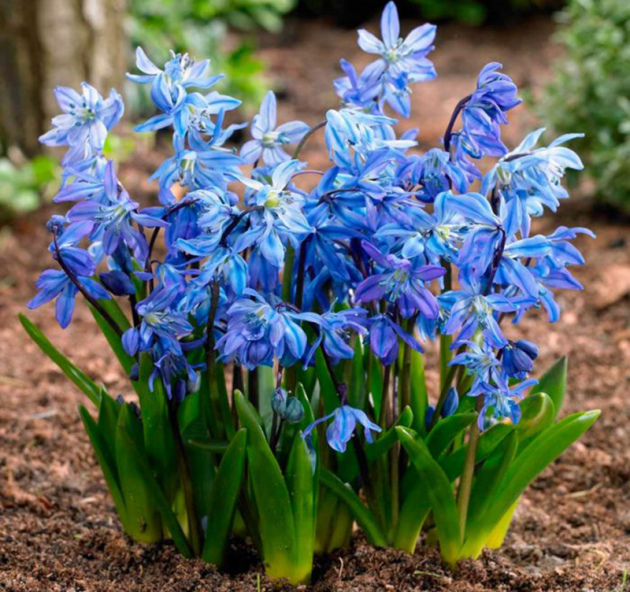
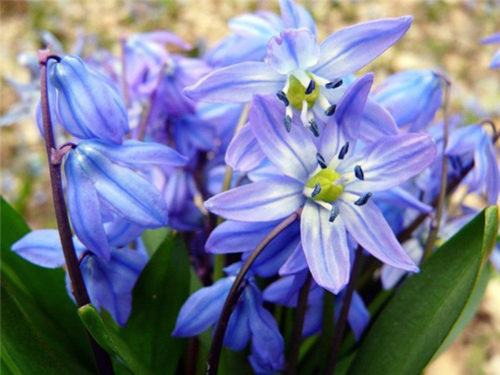
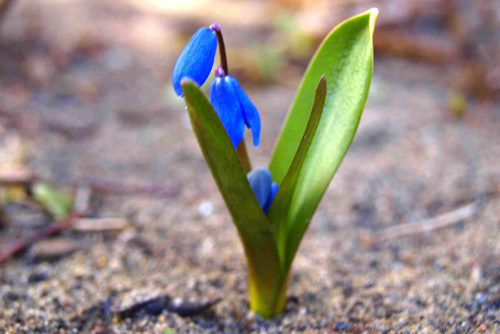
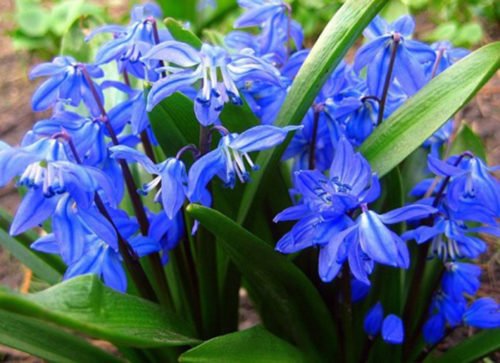
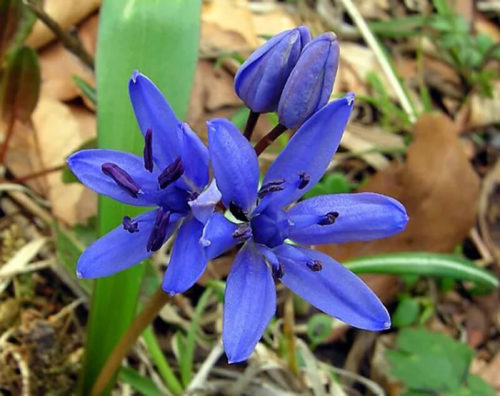
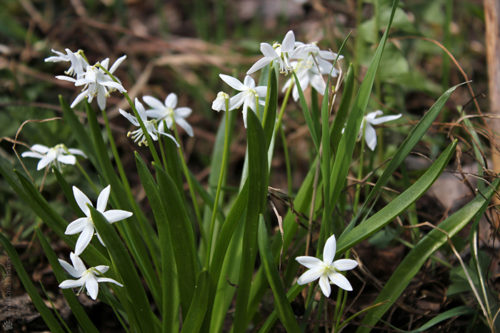

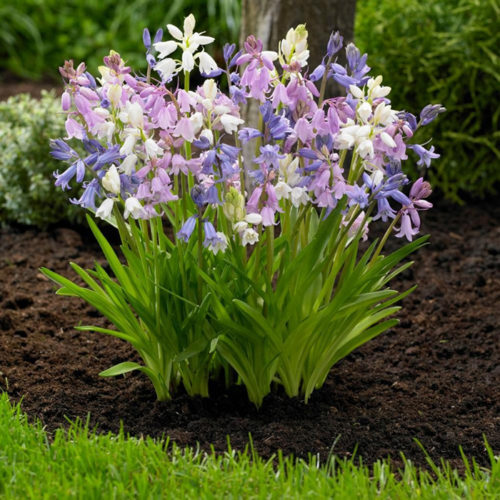
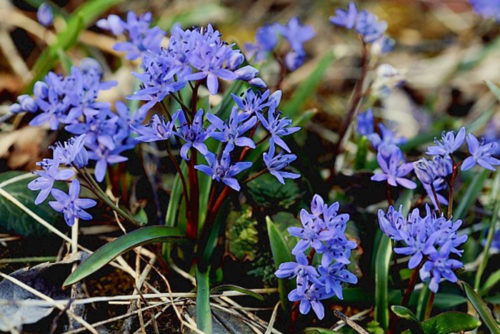
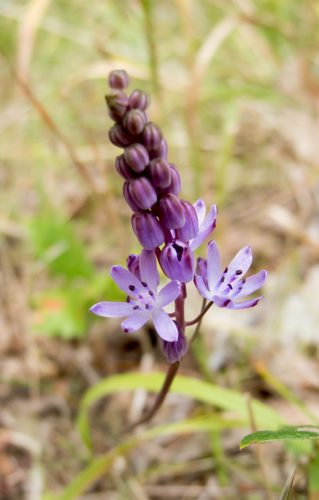
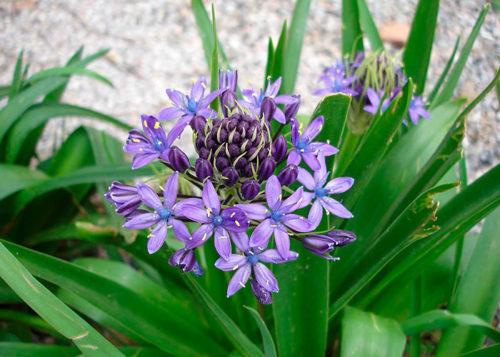
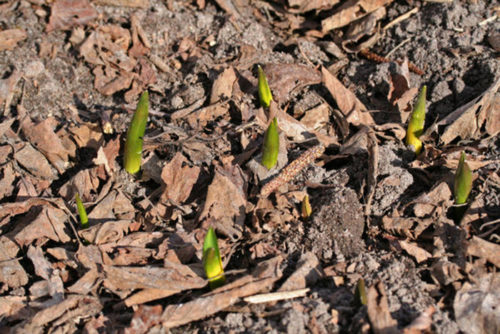


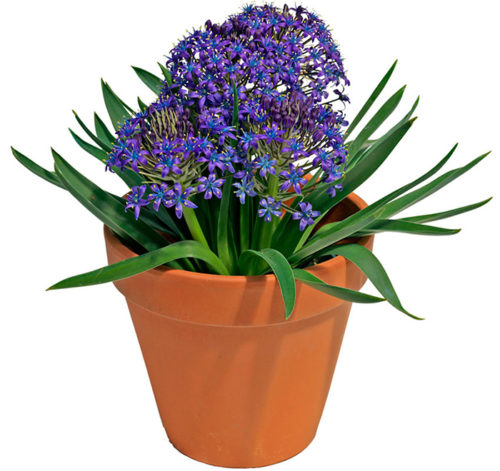
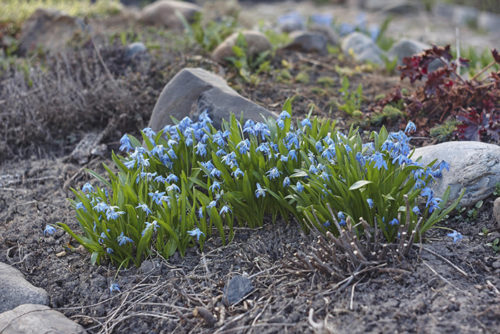
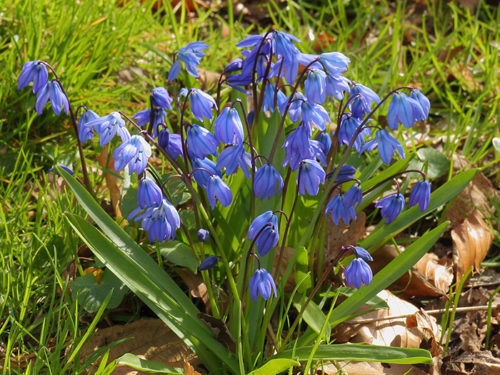
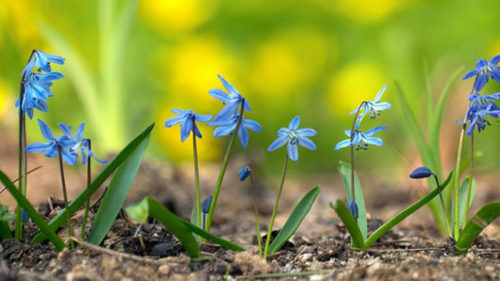
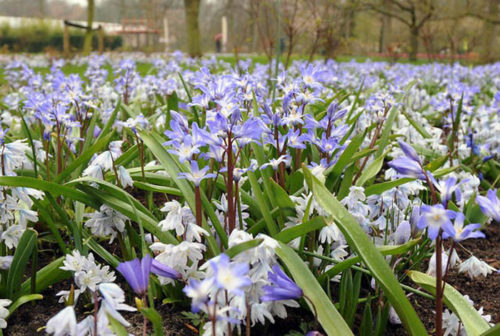
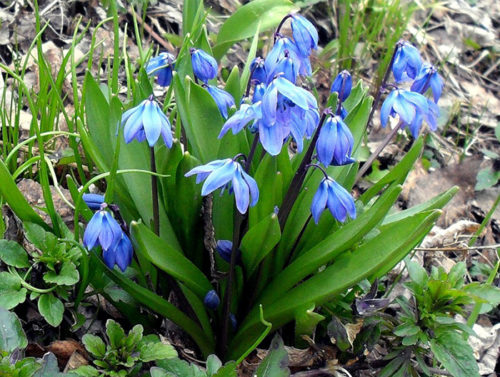
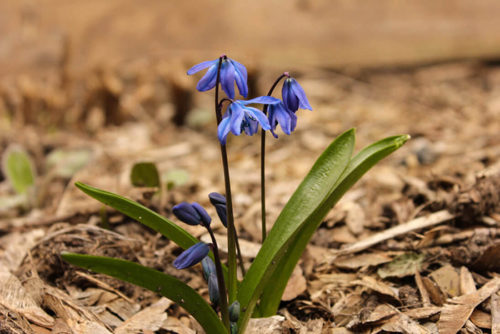
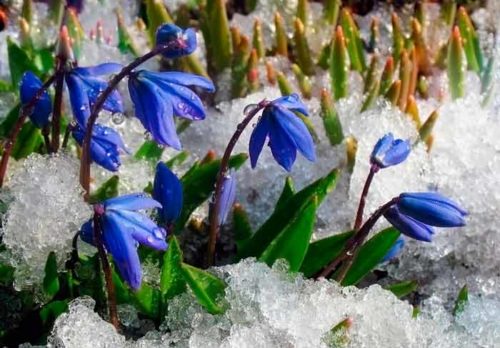












 Start a discussion ...
Start a discussion ...